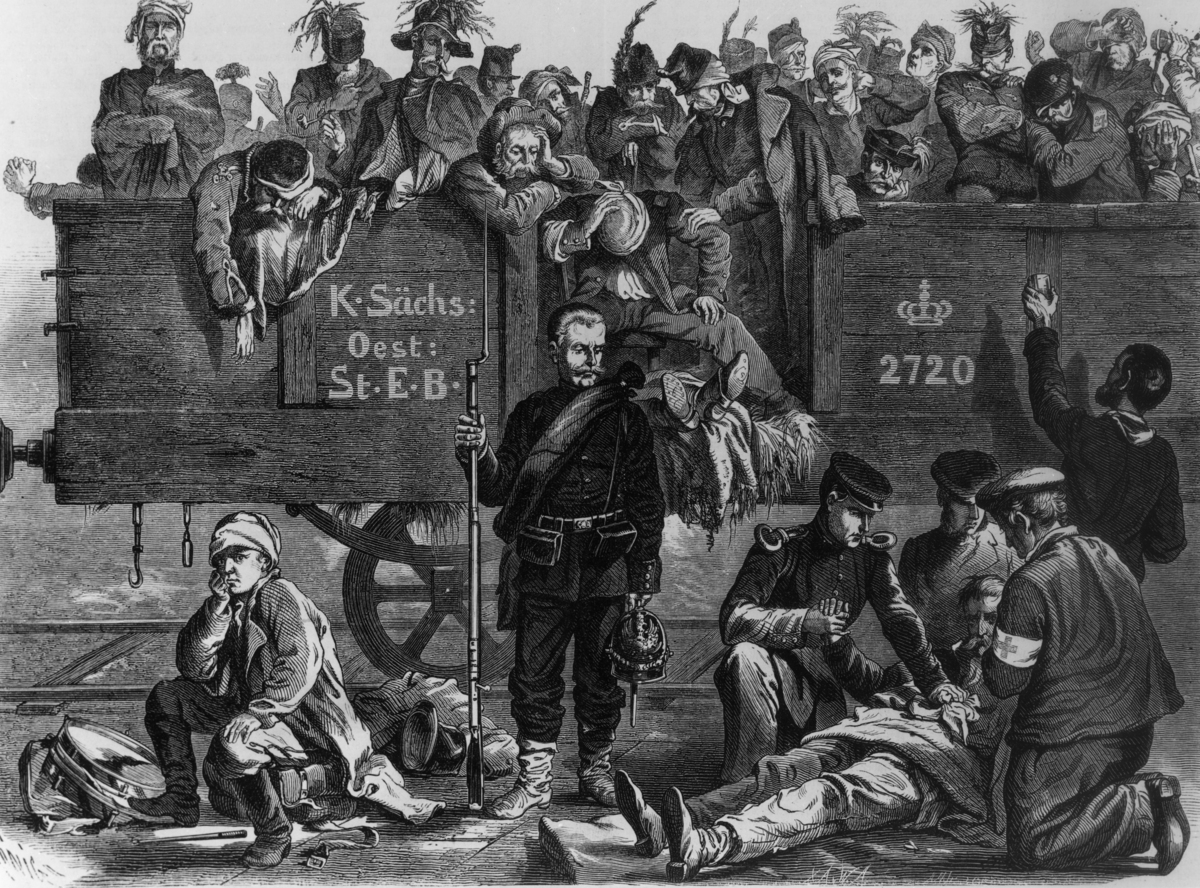Abstract
In late June 1866, Saxon cities were already seeing the arrival of
casualties resulting from skirmishes between Prussian, Saxon, and
Austrian forces. After the Battle of Königgrätz on July 3, 1866, the
number of dead and wounded rose enormously, straining Saxony’s
transportation and medical facilities to the limit. The influx of
prisoners of war only compounded the logistical nightmare. When Saxony’s
municipal authorities complained to Prussian civil and military
authorities in Dresden about the hardships their residents were facing
as the result of war and occupation—including the billeting of Prussian
soldiers, the building of huge defensive earthworks in the center of
Dresden, forced tributes paid to the occupiers, and demands for ever
greater numbers of hospital beds and medical supplies—their complaints
generally fell on deaf ears.
